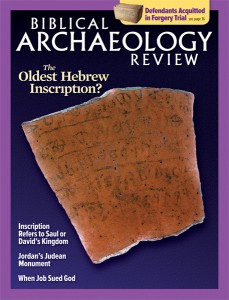
One of the most dramatic archaeological monuments in Jordan—an admittedly Jewish one—has been repeatedly misidentified. French historian Ernest Will called it the “Finest Hellenistic monument in the Near East”1 and considered it a château.2 The structure is known locally as Qasr al-Abd, or “Castle of the Slave (or Servant).” It is part of a 75-acre estate called Airaq al-Amir (also spelled ‘Iraq el-Emir), lying 12 miles southwest of the Jordanian capital, Amman.
The site was entered via a monumental gateway, much of which remains in a ruined state and hidden by undergrowth.3 The glory of the site, however, is Qasr al-Abd, a monumental ruin destroyed by several earthquakes and partially restored by a French team between 1976 and 1986. The structure is 124 feet long and 62 feet wide (72 by 36 royal or Egyptian cubits), making it exactly twice as long as it is wide, an “ideal” plan that has led researchers to regard it as a building of some special importance.
Already a library member? Log in here.
Institution user? Log in with your IP address.

